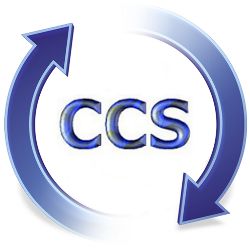
ACM has completed a major update of its Computing Classification System (CCS), which has served as the de facto standard for classifying the computing literature since 1964. NYU professor Zvi Kedem served as Editor-in-Chief of this special CCS Update Project, leading a group of 120 computing specialists—a third of whom are ACM Fellowsa—to collaborate with ACM staff and Silverchair Information Systems, Virginia-based specialists in ontology development and semantic markup. The 2012 version of the CCS reflects a year-long team effort that included two review stages and many iterations. The vendor created first drafts using inter alia user search logs from the ACM Digital Library; machine analysis of DL texts and of author-supplied keyword occurrences; and manual examination of extant computer science taxonomies. ACM’s domain experts used these drafts as their starting point.
The CCS is used in the DL to index content for subject-oriented searching; to find similar documents; to create author expertise profiles; to identify strong research areas in Institutional Profiles; and to create the topical tag clouds found in aggregated SIG and conference views.
Outside the DL, researchers and institutions use the CCS in their own applications and research projects. The 2012 CCS was developed as a semantic ontology and is available in SKOS format (Simple Knowledge Organization System), providing better support for linked data for those building semantic Web applications.b
Even as the merits of full-text versus taxonomic indexing are debated, ACM’s 2012 CCS taxonomy provides a modern cognitive map of the field of computing in all its breadth. A new visual presentation of the CCS in the ACM Digital Library (http://dl.acm.org/ccs.cfm), designed by Wayne Graves, ACM’s Director of IS, facilitates scoped navigation of the field while providing a mechanism for community review at every level of the taxonomy. Regular CCS updates utilizing this feedback are planned to maintain its currency. All feedback will be evaluated for the next periodic update, planned for 2014.
The old CCS scheme has been mapped to the new, and both the 1998 and 2012 terms are available on Citation Pages of all indexed articles. The 2012 concepts are presented in diagrammatic displays that help contextualize a work within the field, as shown in the accompanying example.
Fuller integration of the 2012 CCS in the Digital Library will take place in the coming months. Author and Institutional Profile pages will incorporate the new version; topical tag clouds for ACM Special Interest Groups and conferences will be expressed using the new concepts; and an Advanced Subject Search will be developed around the 2012 CCS. Tools to facilitate author application of the new index terms are now being built. When complete, authors can begin indexing their articles using the 2012 CCS, anticipated by January 2013.c




Join the Discussion (0)
Become a Member or Sign In to Post a Comment